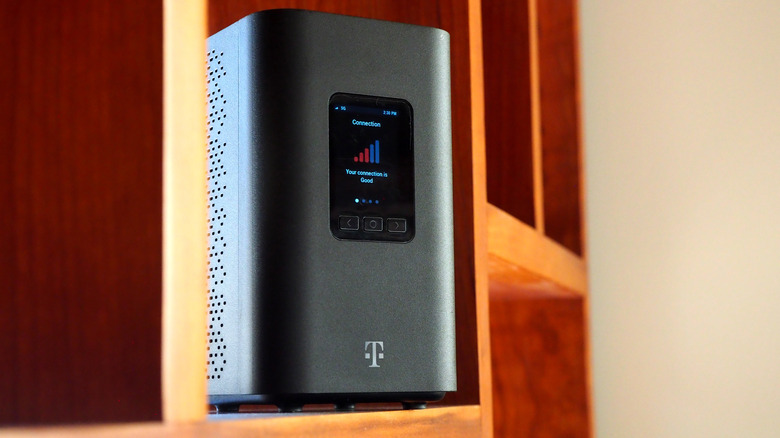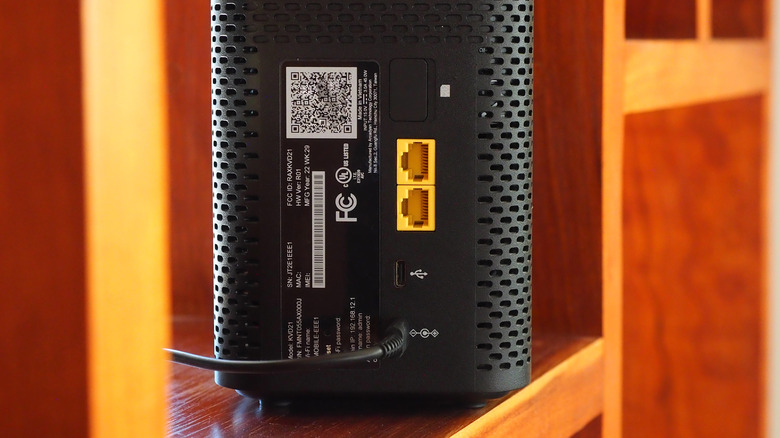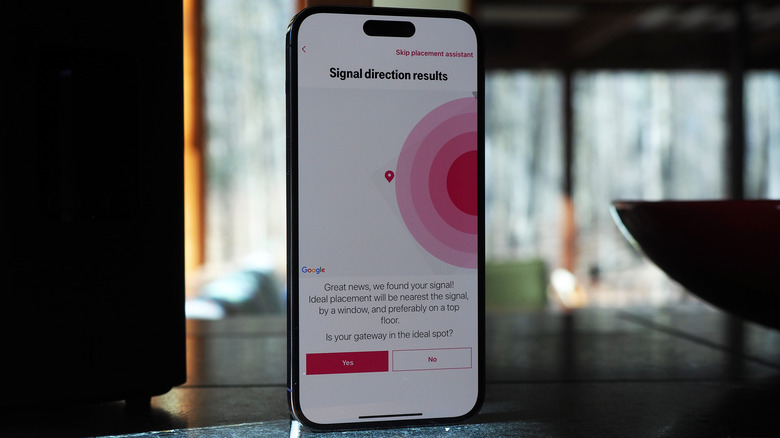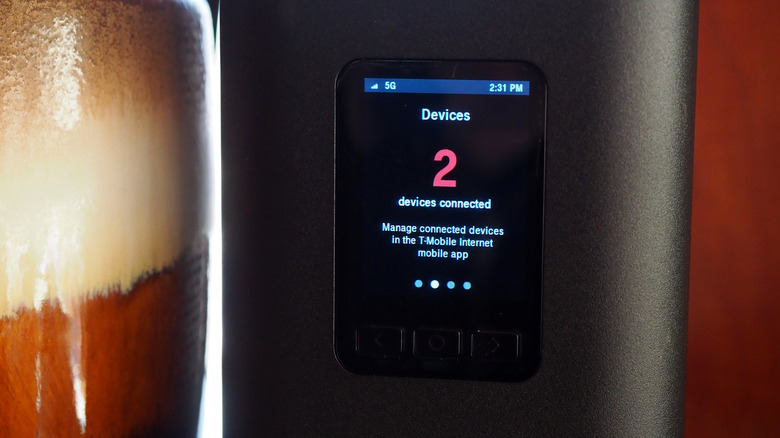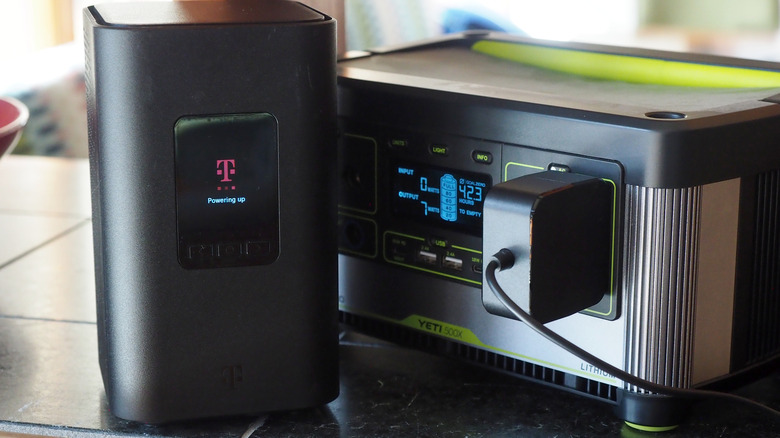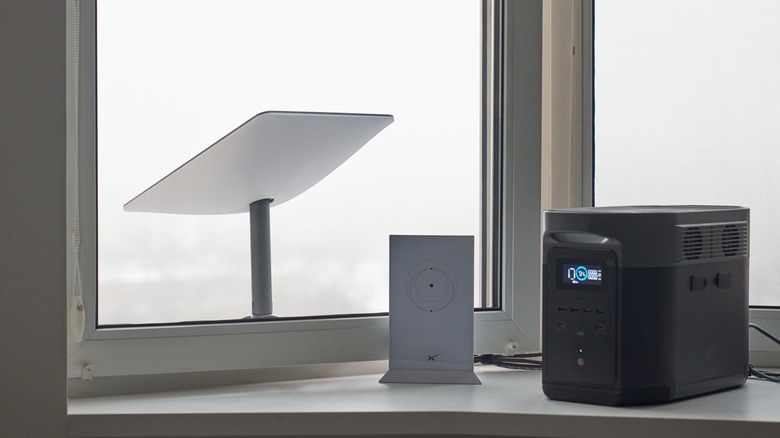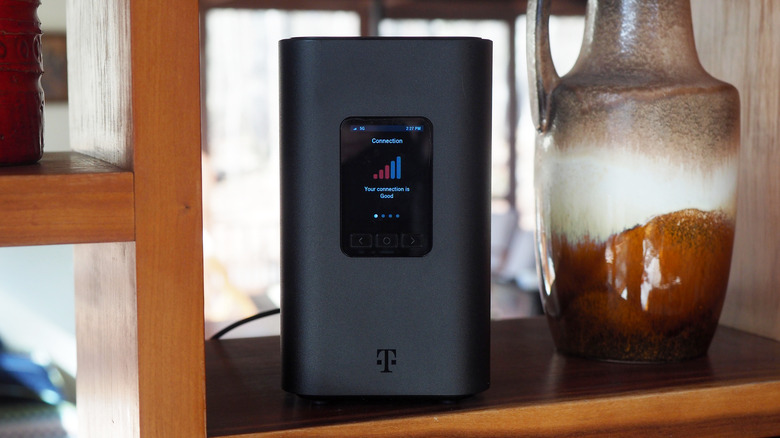T-Mobile 5G Home Internet Review: Getting Online In An Outage
- Aggressively priced compared to cable/DSL
- Fast downloads with a decent 5G signal
- Power-frugal modem
- No data caps
- Setup can involve a lot of trial and error
- Existing subscribers get the best deals
- Service slowdowns can be tough to diagnose
- No internal battery
Internet access is no longer a luxury, but an essential, yet like with many utilities, we're often at the mercy of a single provider. T-Mobile 5G Home Internet aims to change that, and — like with all its offerings — the magenta-themed carrier is vocal about just how liberating cutting your cable or DSL connection could be. My question when I signed up, though, was whether 5G could cover the gaps when nature takes an icy hammer to your traditional ISP.
Just how much T-Mobile's 5G Home Internet will cost each month depends on a few different factors. On paper, it's $50 per month with no setup fee, or $600 each year, including taxes. That gets you unlimited data, though the carrier reserves the right to throttle connections depending on service status or limit them altogether if you're trying to do peer-to-peer or constant streaming.
However, many people won't have to pay anything close to that amount. Existing subscribers with at least one T-Mobile Magenta MAX line (currently $85/mo) can get 5G Home Internet service too, for $30/mo extra. It's worth noting that a 5G mobile hotspot is also included on that Magenta MAX line, though with a 40GB data cap. I took advantage, meanwhile, of a $25/month promotion. I still had to add the 5G Home Internet service to an existing Magenta MAX subscription — I was already a customer — but it's adding just $300 per year to my overall charges (with bill credits taking care of the 50% reduction). Regardless of price, there's no minimum contract: you can cancel at any point and return the hardware.
Plug and Play
Setup manages to be both simple and frustrating. The hardware itself is a simple black block, with a small color display on the front and three buttons. On the back, there's a USB-C port for the included power supply, a second USB-C port that T-Mobile doesn't use, and two 10/100 ethernet ports for wired connections. A pre-installed SIM card and a pin-hole reset button round things out.
Plug it in, and after a couple of minutes to boot, the modem can be linked with T-Mobile's smartphone app for iOS and Android. With that, you can change the network name (SSID) and adjust the security settings for your Wi-Fi 6 network if you don't want to use the default name and password printed on the side.
Sadly there's no way to have that SSID and password appear on the modem's display, which feels fairly underused at present. The buttons scroll through four screens, showing signal strength, the number of devices currently connected, any service messages T-Mobile sends, and finally an option to change the on-device language.
Where do I put you?
Finding the best position is where things get trickier. With a traditional cable or DSL modem the decision is made for you, depending on where the line comes into the home. When you're using a 5G mobile network, though, location matters.
The front display shows a five-bar signal strength meter — and, annoyingly tiny, whether you're on a 4G or 5G connection — while the app promises to help find the best location. T-Mobile recommends positioning the modem as high as possible, away from possible sources of interference like cordless phones and microwaves. Really, though, you'll get the most success moving it around, plugging it in, waiting for it to connect, and then running a speed test with your phone or laptop.
Since there's no onboard battery, and the modem has to boot up each time you plug it in, that's a time-consuming process. I looked up where my nearest T-Mobile cell tower was, to get a head-start on location, but it still took trial and error to get the meter to change from "weak" to "good" on the modem's screen. Figure on it being out in the open, too, for the best results, which is a shame if you were hoping to hide it for aesthetic reasons.
Fast enough to take on cable broadband
With a decent signal, T-Mobile's 5G Home Internet can be impressively speedy. My Comcast Xfinity cable service tops out at 400 Mbps downloads and 10 Mbps uploads, the maximum the line supports. For that, I'm paying around $110 per month (including voice service). In contrast, T-Mobile says to expect 33-182 Mbps downloads and 6-23 Mbps uploads from its 5G.
In my own speed tests, with the modem in what the T-Mobile app declared a good location, I saw 213 Mbps downloads and 6.32 Mbps uploads. Interestingly, that's roughly the same download rate as an iPhone 14 Pro Max on T-Mobile's network in the same location, but almost 50% faster than the smartphone's upload rate.
WiFi range is also better, compared to using a smartphone's mobile hotspot feature. Both phone and standalone modem are subject to the whims of the 5G network, too, though the carrier warns that due to "data prioritization" it may intentionally slow 5G Home Internet customers during periods of particular congestion.
An internet lifeline in an ice storm
T-Mobile is keen to get cable and DSL subscribers to switch over entirely: it even offers to pay off cancellation fees incurred in ending your contract, just as it has done for smartphone plan switchers. My primary interest, though, was in how it could be used as a backup connection. Outages — for power or cable, or both — aren't uncommon where I live, and with two people working from home, it's particularly important to stay online as much as possible.
The reality of that plan has been mixed success. T-Mobile's modem is surprisingly frugal: plugged into a Gear Zero portable battery, it typically consumes 6-14W. That's markedly less than the Xfinity modem which Comcast supplies, and while it might not be something you care too much about when the electricity is free-flowing, you become a lot more aware of it when you're watching a battery meter drop.
The flip side is that you're still dependent on T-Mobile's network, and when everyone in the area is trying to tether — whether with a phone or a standalone modem — the experience dips dramatically. At times the connection was speedy, but equally often it would be sluggish to nonexistent. There's little in the way of information given as to network performance, either, beyond that signal strength meter.
T-Mobile is intentionally limiting the availability of 5G Home Internet service — in part to deal with issues like this. If too many people in your area have already signed up, you might not be able to. The carrier also falls short of committing to specific speeds or indeed guaranteeing service at all. Don't think, either, of throwing it in your car and venturing out to find a better connection. T-Mobile has location limits on service: you can't, for example, take the modem with you between your primary residence and holiday home.
Verizon and Starlink are the big rivals
There are a couple of alternatives worth considering, though each comes with its own mix of compromises. Verizon offers a similar 5G home internet package, currently priced at $60/mo ($50/mo with Auto Pay, and $25/mo for existing customers with select 5G smartphone plans). It, of course, is subject to the same network availability as T-Mobile's.
Then there's SpaceX's Starlink, which relies on a constellation of satellites and a dish to get you online. SpaceX is also limiting sign-ups, though mainly for reasons of coverage from its growing satellite swarm. It's more expensive than the 5G-based systems — $599 for the hardware, and $120 for monthly service — and the Starlink hardware is more power-hungry, a consideration if you're hoping to run it off a battery or portable generator during an outage.
I have a Starlink preorder, but capacity limits mean I've not been able to test the service out fully yet. One advantage over T-Mobile and Verizon's offerings is that Starlink can — with its more expensive RV plan — be used in different locations, albeit with the proviso that they may not all get the same data speeds.
T-Mobile 5G Home Internet Verdict
To be fair, T-Mobile doesn't bill 5G Home Internet as a way to weather your broadband-addicted way through traditional outages. All the same, I doubt I'm the only one for whom part of the service's appeal is the thought of getting online when traditional connectivity is struggling. My experience in a roughly four-day power and cable outage suggests your mileage there may vary.
When it worked, T-Mobile's service felt a whole lot like my regular Xfinity connection. Plenty of bandwidth, rock-solid voice and video calls, and streaming Netflix and other services. Problem was, those times were punctuated by sluggish or non-existent data, and there was little in the way of insight through either the modem's display or T-Mobile's companion app to see what might be causing that.
Despite that, and while it may seem excessive to be paying for two ISPs, I'll be keeping T-Mobile's modem alongside my Comcast one. At $25/mo, it feels like a solid backup option; I'd probably feel differently if I was paying twice that amount, mind. Nonetheless, on a megabits-per-dollar basis, it's considerably cheaper than my Xfinity service. Those who have even slower options from traditional cable and DSL providers may find plenty to like here, as what was once typically a monopoly is finally cracked open by 5G.
